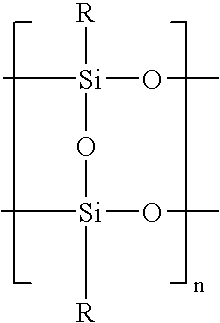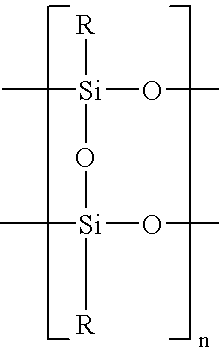Supercritical fluid-assisted deposition of materials on semiconductor substrates
a technology of supercritical fluids and substrates, applied in the direction of liquid/solution decomposition chemical coatings, coatings, basic electric elements, etc., can solve the problems of limited cvd processes for film deposition, high particle levels, and many chemical species that are neither thermally stable nor volatile enough for sustained vaporization
- Summary
- Abstract
- Description
- Claims
- Application Information
AI Technical Summary
Benefits of technology
Problems solved by technology
Method used
Image
Examples
Embodiment Construction
[0027]Supercritical fluids are formed under conditions at which the density of the liquid phase equals the density of the gaseous phase of the substance. For example, carbon dioxide (CO2), which is a gas at standard temperature and pressure, undergoes a transition from liquid to SCF above a critical point, corresponding to Tc≧31.1° C. and pc≧73.8 atm. Once formed, the density of the SCF can be varied from liquid-like to gaseous-like, yielding different solvation abilities, by varying the pressure and temperature. Supercritical fluids have a solubility and diffusibility approaching that of the liquid and gaseous phase, respectively. Additionally, the surface tension of SCFs is negligible.
[0028]Because of its readily manufactured character, ability to be recycled, lack of toxicity and negligible environmental effects, supercritical CO2 is a preferred SCF in the broad practice of the present invention, although the invention may be practiced with any suitable SCF species, with the choi...
PUM
| Property | Measurement | Unit |
|---|---|---|
| temperatures | aaaaa | aaaaa |
| temperatures | aaaaa | aaaaa |
| room temperature | aaaaa | aaaaa |
Abstract
Description
Claims
Application Information
 Login to View More
Login to View More - R&D
- Intellectual Property
- Life Sciences
- Materials
- Tech Scout
- Unparalleled Data Quality
- Higher Quality Content
- 60% Fewer Hallucinations
Browse by: Latest US Patents, China's latest patents, Technical Efficacy Thesaurus, Application Domain, Technology Topic, Popular Technical Reports.
© 2025 PatSnap. All rights reserved.Legal|Privacy policy|Modern Slavery Act Transparency Statement|Sitemap|About US| Contact US: help@patsnap.com



